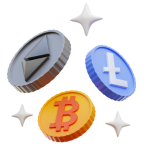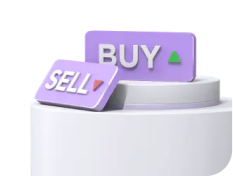Please rotate your device horizontally for a better viewing experience

Precious Metals
Precious Metals trading involves buying and selling precious metals such as gold, silver, platinum, and palladium. These metals are considered valuable due to their rarity and intrinsic properties. Traders can participate in Precious Metals trading through various financial instruments such as futures contracts, options, ETFs (Exchange-Traded Funds), and physical bullion. Factors influencing Precious Metals prices include economic data, geopolitical events, inflation, interest rates, and market speculation. It's essential for traders to conduct thorough research and analysis before engaging in Precious Metals trading to make informed decisions and manage risks effectively.
When it comes to Precious Metals trading, understanding the unique characteristics of each metal is crucial. Here is some more detailed information about the common precious metals:
Gold
Gold is one of the most traded precious metals. It is widely considered a safe-haven asset, often used as a store of value during times of economic uncertainty. Factors affecting gold prices include inflation, interest rates, USD strength, geopolitical tensions, and demand from industries like jewelry and technology.
Silver
Silver is another popular metal among traders. It is used not only for investment but also in industrial applications like electronics and solar panels. The price of silver is influenced by similar factors as gold, but silver tends to be more volatile due to its dual nature as an investment and an industrial metal.
Platinum
Platinum is rarer than gold and silver, with most production coming from South Africa. It is widely used in the automotive industry, specifically in catalytic converters. Platinum prices are affected by factors like supply and demand dynamics, industrial usage, and economic conditions.
Palladium
Palladium is predominantly used in catalytic converters for gasoline-powered vehicles. It has seen significant price increases in recent years due to supply shortages and increased demand. Factors impacting palladium prices include automobile sales, mining output, and global economic trends.
To trade Precious Metals effectively, traders often use technical analysis, fundamental analysis, and market sentiment to make informed decisions. Additionally, staying updated on global economic trends, geopolitical events, and market news is essential when trading Precious Metals
Trading Precious Metals as leveraged Contracts for Difference (CFDs) is a popular way for investors and traders to speculate on the price movements of metals like gold, silver, platinum, and palladium without owning the underlying assets. Here are some key points to consider:
Leveraged Trading:
CFDs allow traders to open positions with leverage, meaning they can control a larger position size with a smaller amount of capital. While leverage can amplify profits, it also increases the potential for losses, so risk management is crucial.
Price Speculation:
Precious Metals CFDs enable traders to profit from both rising and falling prices. By taking long (buy) or short (sell) positions, traders can capitalize on market movements in either direction.
Cost-effective Trading:
CFD trading often involves lower costs compared to traditional trading methods. Traders can benefit from tight spreads, no commission fees, and the ability to trade on margin.
Market Access:
By trading Precious Metals CFDs, traders can access global markets and trade metals 24/5, taking advantage of price fluctuations even during non-trading hours.
Risk Management:
Given the volatility of Precious Metals markets, risk management tools like stop-loss orders, take-profit orders, and trailing stops can help traders protect their capital and manage their risk exposure effectively.
Market Analysis:
Fundamental analysis, technical analysis, and market sentiment play significant roles in trading Precious Metals CFDs. Traders often monitor economic indicators, geopolitical events, and central bank policies to make informed trading decisions.
It's important for traders to understand the characteristics of CFD trading, including leverage, margin requirements, and the potential for rapid gains or losses. As with any form of trading, gaining knowledge, practice, and using risk management strategies are essential for success in Precious Metals CFD trading.
Fundamental indicators that drive Gold prices
Gold prices are influenced by a combination of economic, geopolitical, and market-specific factors. Here are some fundamental indicators that play a significant role in driving gold prices:
Interest Rates:
Inverse Relationship:
Gold often exhibits an inverse relationship with interest rates. When interest rates are low, the opportunity cost of holding non-interest-bearing assets like gold is reduced, making gold more attractive. Conversely, higher interest rates may lead investors to favor interest-bearing assets over gold.
Inflation Rates:
Hedge Against Inflation:
Gold is often considered a hedge against inflation. When inflation rises, the purchasing power of fiat currencies decreases, and investors may turn to gold as a store of value. As a result, higher inflation expectations can lead to increased demand for gold.
Currency Strength:
US Dollar:
The strength or weakness of the U.S. dollar has a significant impact on gold prices. Gold is priced in dollars, so when the dollar weakens, it takes more dollars to buy an ounce of gold, leading to higher gold prices. A strong dollar, on the other hand, tends to put downward pressure on gold.
Central Bank Policies: Reserve Asset: Central banks' decisions regarding gold reserves can influence gold prices. Central banks may buy or sell gold based on their assessment of economic conditions. Increased buying by central banks can signal confidence in gold as a reserve asset.
Geopolitical Events:
Safe-Haven Demand:
Gold is often considered a safe-haven asset during times of geopolitical uncertainty. Political tensions, conflicts, or other global uncertainties can lead to increased demand for gold as investors seek a secure store of value.
Equity Market Performance:
Risk Perception:
Gold's appeal tends to increase during periods of market volatility or when there is a lack of confidence in equities. Investors may turn to gold as a safe-haven asset when there are concerns about the stability of financial markets.
Supply and Demand Dynamics:
Mining Production:
Changes in gold mining production can impact the overall supply in the market. Supply disruptions or increases in production costs can influence gold prices.
Jewelry and Industrial Demand: Beyond investment demand, gold is also used in jewelry and various industrial applications. Changes in demand from these sectors can affect overall gold prices.
Real Interest Rates:
Real Returns:
Real interest rates, adjusted for inflation, can influence gold prices. When real interest rates are negative, meaning that nominal interest rates are lower than the inflation rate, gold becomes more attractive as an investment.
Technical Factors:
Market Sentiment:
Traders and investors often use technical analysis and chart patterns to gauge market sentiment. Trends, support and resistance levels, and other technical factors can influence short-term movements in gold prices.
Understanding these fundamental indicators and their interplay helps investors, central banks, and policymakers analyze and anticipate shifts in the gold market. Gold's unique status as both a commodity and a financial asset makes it responsive to a wide range of economic and geopolitical factors.
Trade Gold, FX, Indices, Shares, energies, Crypto & commodities

Copy Trading

Up to 15$/Lot back to our introducing brokers

Up to 25% deposit bonus

No Obligation Quote
Let's Get Started
Talk to a Sales Rep
24/7 Consultancy
Existing Customer?
Contact Customer Support
Not sure where to begin?
Let us help start your project

Live Chat

Contact Us
Login
Registration
Fill up the form and our team will get back to you within 24 hours




